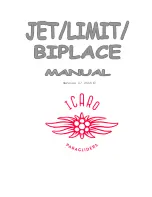
SOLOY TURBINE PAC
SECTION 4
POHS CESSNA U/TU 206G
NORMAL PROCEDURES
4-24
F.A.A. Approved
October 4, 2005
CAUTION
AN AFTERFIRE (RECOGNIZED BY A RAPID
INCREASE IN TOT) CAN OCCUR DURING
SHUTDOWN IF FUEL CUTOFF IS NOT
COMPLETE. IF A SHUTDOWN FIRE OCCURS,
IMMEDIATELY ENGAGE THE STARTER AND
MOTOR THE ENGINE WITHOUT IGNITION TO
EXTINGUISH THE FIRE. THE TEMPERATURE
LIMITATIONS AND MAINTENANCE ACTION
MUST BE OBSERVED.
Engines subjected to salt water or other chemically laden atmosphere
(including pesticides) shall undergo water rinsing after shutdown following
the last flight of the day. Procedures for the rinse, cleaning and
preservation of the compressor are explained in the Rolls-Royce 250-C20
Series Operation and Maintenance Manual.
When the airplane is not stored in a hangar, the air inlet should be covered
to protect the induction system from birds and debris. Install the control
locks, propeller bungee and exhaust covers.
COLD WEATHER OPERATION
Use appropriate covers on the aircraft when it is parked. Make certain the
compressor rotor is not frozen if the aircraft is in a freezing atmosphere.
To assure consistent starts below 4
C (40
F) cold weather fuels as
described in the limitations, Section 2, are recommended. Additionally, for
flight at ambient temperatures of 4
C (40
F) and below, the fuel must have
an anti-icing additive.
If equipment is available and conditions allow, when the aircraft has been
cold soaked at temperatures below 4
C (40
F), use an auxiliary power
source for faster, more satisfactory starts.
If the aircraft has been cold soaked at a temperature below –18
C (0
F)
and a battery start must be made, preheat the engine fuel control and
battery. When a cold weather start is anticipated, the battery should be
removed and stored at normal room temperature.
CAUTION
DO NOT USE AN OPEN FLAME HEATER TO
PREHEAT THE BATTERY OR THE ENGINE FUEL
CONTROL.
UNCONTROLLED
COPY
















































